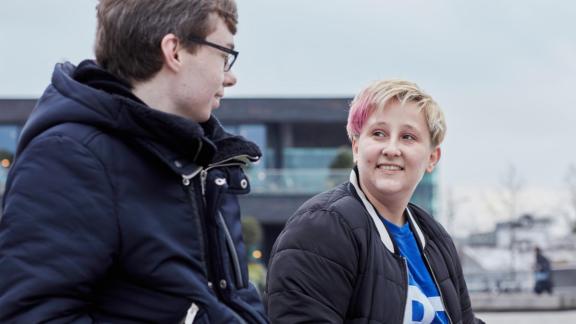
Articles by Sawsane Djazouli
Ending Female Genital Mutilation, at the crossroads of different struggles
Fighting FGM in Europe: the need for intersectionality On May 7th, 2024, the first-ever European Directive on combatting violence against women and girls was adopted by the Council of the European Union, thanks to the long-term advocacy of feminist movements and members of the European Parliament championing the European Commission’s proposal. While the long-awaited Directive fails to address some crucial topics – an EU-wide consent-based definition of rape – it still offers very important provisions in tackling violence against women, among which Female Genital Mutilation as a stand-alone crime. As a next step, the European Commission should also provide concrete policy guidance to Member States on tackling FGM in the upcoming 'Recommendation on harmful practices'. Female genital mutilation (FGM) refers to "all procedures involving the removal of the external female genitalia or other injury to the female genital organs for non-medical reasons. Most often, FGM is practiced on girls and young women under 18". Even before the EU directive, FGM was considered a human rights violation and included in the broad spectrum of gender-based violence by international laws (among which, the Istanbul Convention). The practice has been proven to have no religious or health basis but rather originates from harmful gender social norms. Moreover, according to WHO, women and girls who undergo FGM deal with serious effects on their mental, physical, sexual and reproductive health. According to End FGM European Network, more than 600.000 women currently have to cope with the consequences of FGM in Europe. Although it is a harmful practice which can be found across the globe, the highest prevalence of FGM is observed on the African continent. Even in African countries where the practice was banned, threats of repealing or weakening laws to protect (potential) victims, like Gambia or Somalia, are currently emerging. If Gambia adopts the bill lifting the ban on FGM in June, it could become the first country in the world to overturn such a ban, which would constitute an alarming setback. Even though in Europe there seems to be a consensus on criminalizing FGM, one blind spot remains. Often, women and girls living with FGM are migrants and find themselves in very precarious situations where they are not able to report FGM without taking the risk of being arrested or even deported. To go back to the EU Directive mentioned above, despite a proposition to include a firewall for migrants to confidentially and safely report GBV, the negotiations ultimately left it out. But to meaningfully address FGM it is crucial to address the multifaceted nature of this violence as it mainly affects racialized women with a migrant background. Because they fear being reported, GBV and FGM survivors are all the more reliant on grassroots and local NGOs operating with migrants. These same NGOs are evolving in an ever-shrinking civil space and sometimes the specific geopolitical situation of some countries makes it even harder for them to continue their work. Cyprus, one of Europe’s main entry points into the Mediterranean Sea, appears as a textbook case. The island has a difficult political situation as it’s divided between two governments and the public discourse has been saturated with racist, xenophobic, and nationalist stances. All these elements result in making local NGOs’ work very difficult. If the EU wants to be strong in tackling violence against women and specifically FGM, it must adopt an intersectional approach in the way it designs and implements policy while also thinking about forefront NGO workers and volunteers who sometimes don’t see a dime from their government. It’s also a matter of policy coherence – a prerequisite to a truly feminist foreign policy. The European external action and (de)colonization The EU action to fight FGM is not restricted to European countries as several campaigns have been led in the African continent by the European Union. Tackling FGM outside of Europe requires reflecting on the intrinsic colonial nature its fight could assume. In her insightful article, researcher Maïmouna Balde Bah explains how the first European campaigns targeted to fight FGM in the African region bore a very patronizing and paternalistic tone in a context where many African nations were fighting for independence. In many other cases, when the effort to fight against FGM was led at the grassroots level, activists faced resistance or a lack of support from Western institutions, refusing to take a stance for so-called “cultural” reasons. African grassroots activists also encountered challenges when certain out of the continent organizations and/or charities contributed to FGM medicalization, which “refers to situations in which FGM is practiced by any category of health care provider, whether in a public or a private clinic, at home or elsewhere”. As Bah outlines in her article, rather than multiplying the efforts, when thinking about implementing partners, the EU should understand that supporting grassroots activists is key. There are successful and inspiring examples of community-led initiatives fighting FGM, such as the Africa-Led Movement to end FGM/C, which receives funding from the United Kingdom government. How can the EU fight more effectively against FGM Grassroots women’s rights organizations and human rights defenders’ work is essential as they possess extensive knowledge of their context, making them privileged interlocutors to affected communities. But to bring about concrete and real change requires more flexible and available funding. The EU can – and should – step up both in internal and external policies to support the fight against FGM, following the example of the upcoming Team Europe Initiative on SRHR and the EU-UN Spotlight Initiative. However, there are still challenges regarding the meaningful implementation of the Team Europe Initiative on SRHR but also the much-needed continuation of the Spotlight Initiative to foster long-lasting effects. Ensuring policy coherence and flexible funding for grassroots organizations in the field of gender-based violence, including FGM, are crucial steps towards empowering women and girls to fulfill their potential and live happy, healthy lives, regardless of their socio-economic background. Words by Sawsane Djazouli, with IPPF EN Illustration by Fugitiva for EWAG










